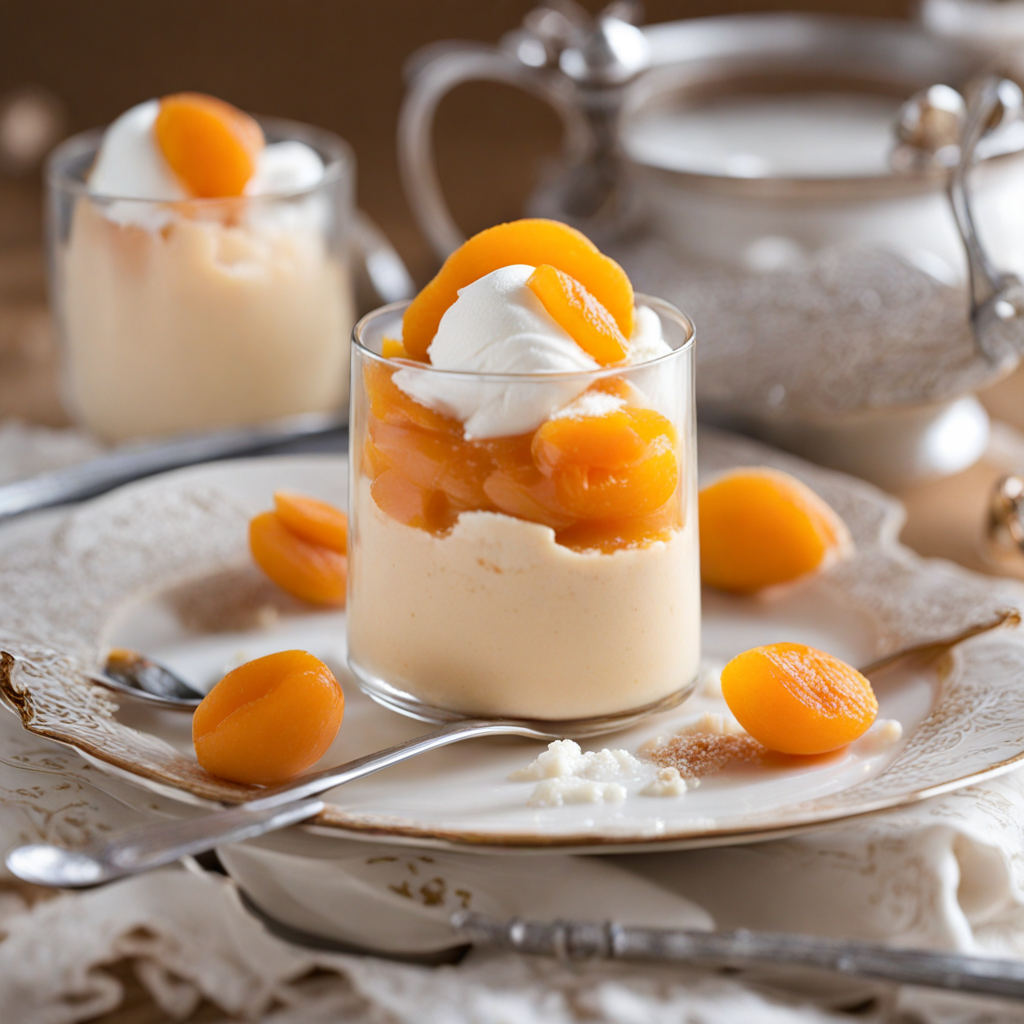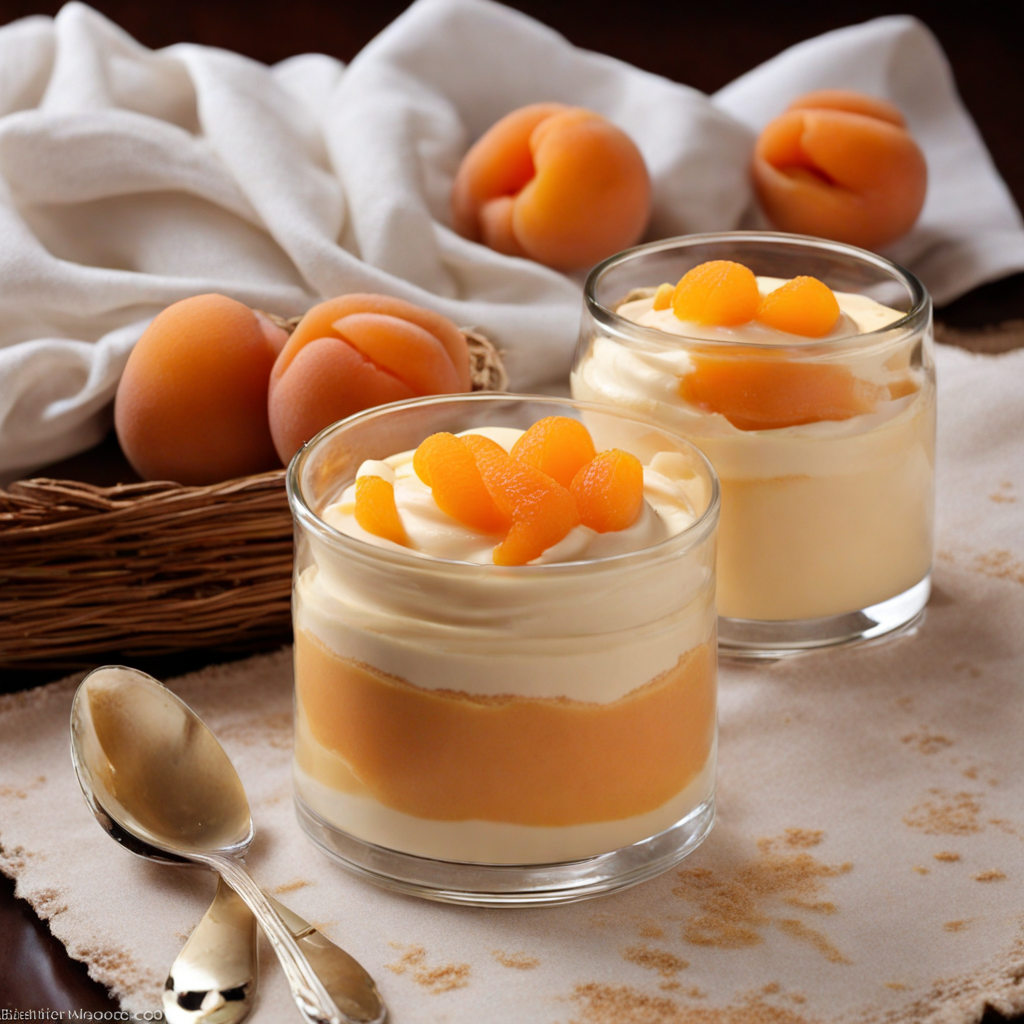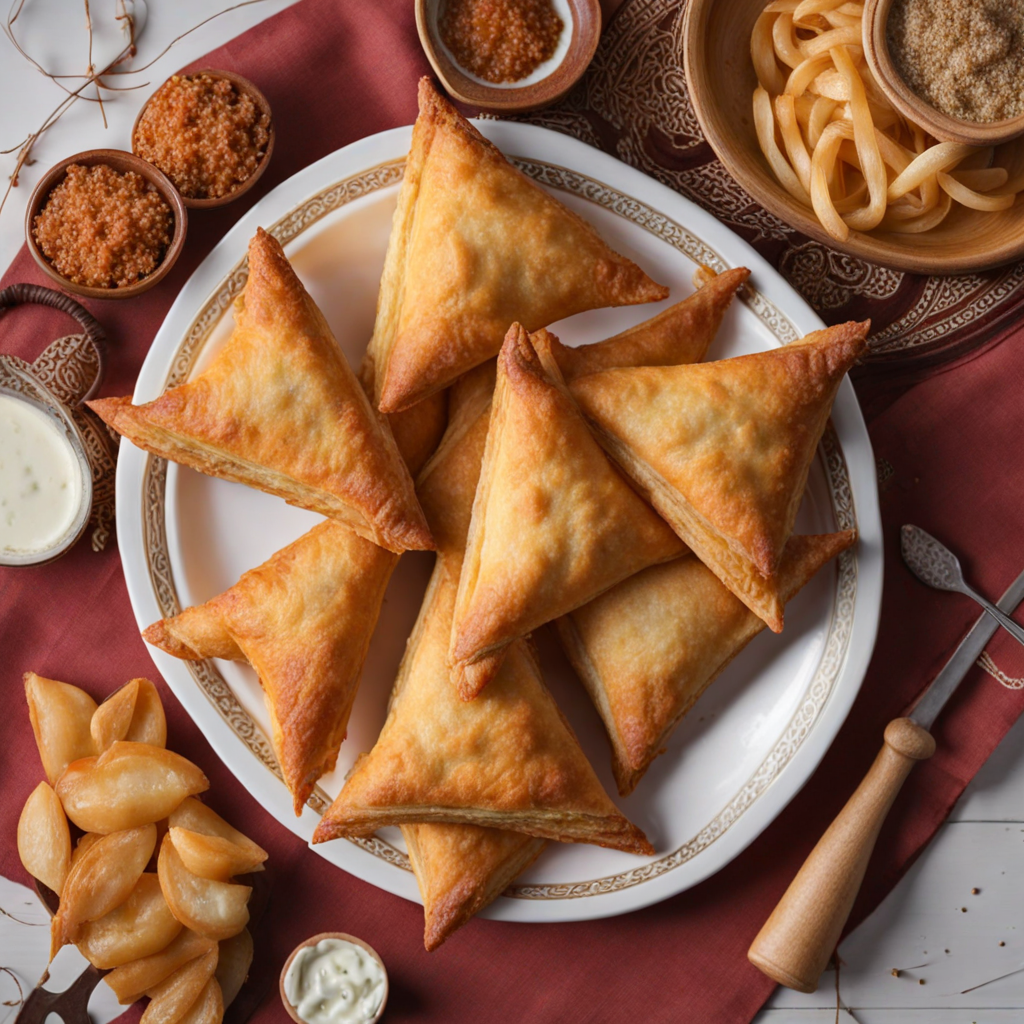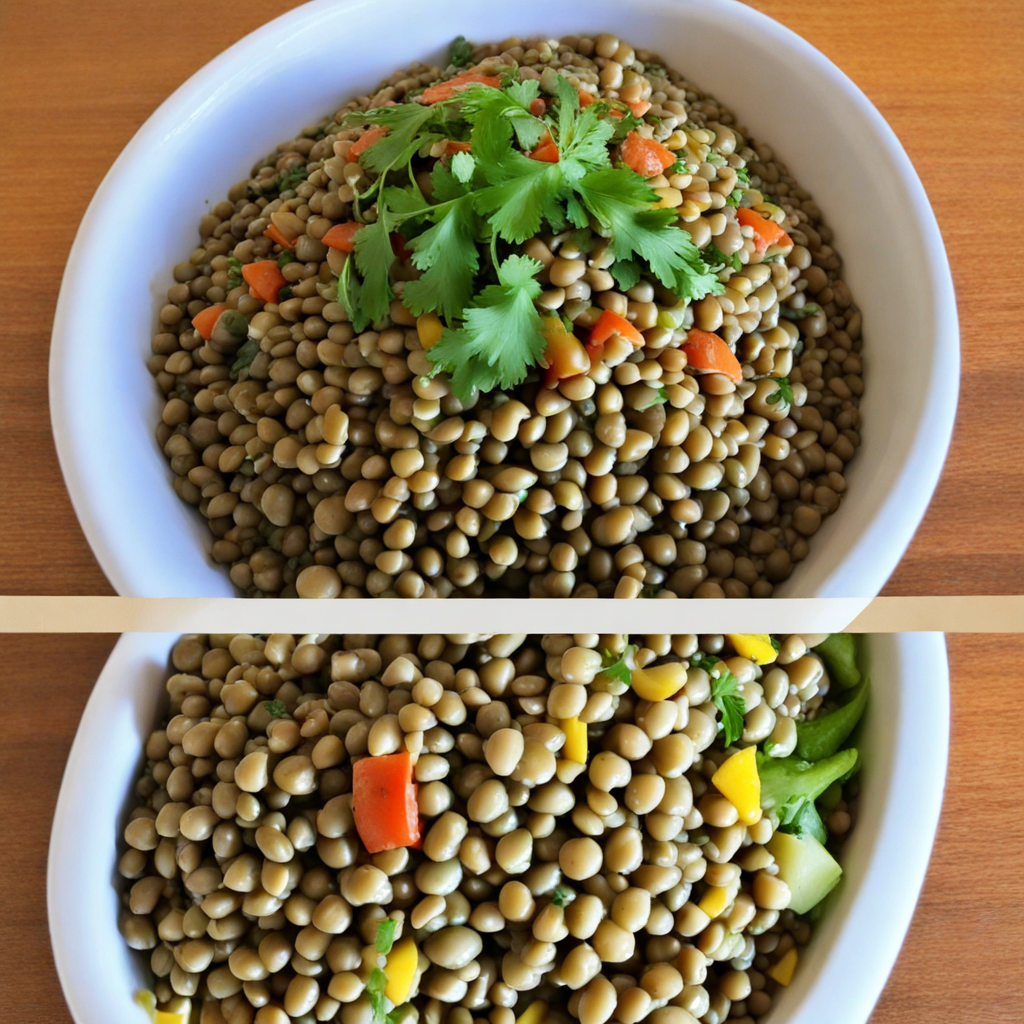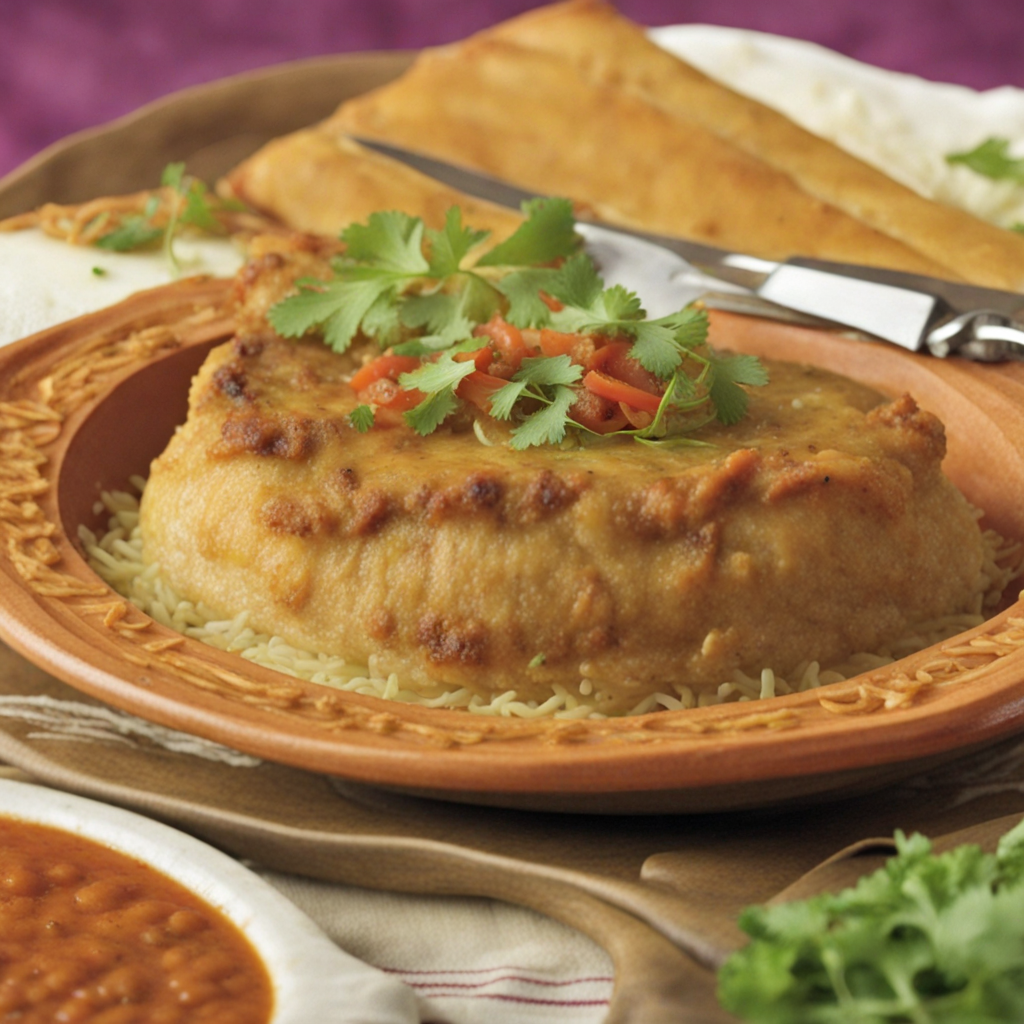Apricot Mousse
Apricot Mousse is a delightful Moroccan dessert that captures the essence of the region's vibrant flavors. This velvety treat is made primarily from ripe apricots, known for their sweet and slightly tangy profile. The fruit is often blended into a smooth puree, which is then combined with whipped cream or a light custard base to create a fluffy texture. The mousse is typically sweetened with sugar and can be enhanced with hints of vanilla or orange blossom water, which infuses the dish with a fragrant aroma that transports you straight to the bustling markets of Marrakech. In Moroccan cuisine, apricots are not just a seasonal delight; they are celebrated for their natural sweetness and health benefits. The mousse showcases this fruit at its best, often garnished with slivers of fresh apricot or a sprinkle of crushed pistachios. The contrast of the creamy mousse with the crunchy nuts creates an inviting texture that complements the smoothness of the dish. The vibrant orange hue of the mousse also makes it visually appealing, adding a cheerful pop of color to any dessert table. Served chilled, Apricot Mousse is a refreshing way to end a meal, especially in the warm Moroccan climate. It can be presented in elegant glassware, allowing the beautiful layers to shine through, making it not just a treat for the palate but also a feast for the eyes. This dessert embodies the Moroccan spirit of hospitality, perfect for sharing at family gatherings or special occasions, inviting everyone to indulge in its unique and luscious taste.
How It Became This Dish
The History of Mousseline de Abricot (موس المشمش) in Morocco #### Origins Mousseline de Abricot, or apricot mousse, is a delightful Moroccan dessert that reflects the country's rich culinary heritage. Its origins can be traced back to the early days of Moroccan cuisine when the influence of Arab, Berber, and Mediterranean cultures began to blend. Apricots, known as "مشمش" (mishmish) in Arabic, have been cultivated in Morocco for centuries, believed to have been introduced by the Romans or brought along the Silk Road by traders. The climate of Morocco, with its warm summers and fertile soil, has allowed apricot trees to thrive, making the fruit a staple in the region's agricultural landscape. The use of fruits in desserts is a hallmark of Moroccan cuisine, which often emphasizes the balance of sweet and savory flavors. As such, the creation of mousses and other creamy desserts became popular as culinary techniques evolved, particularly during the 19th century when French influence permeated Moroccan culinary practices. The combination of local fruits with French techniques gave birth to a unique style of dessert that would come to define the Moroccan patisserie. #### Cultural Significance Mousseline de Abricot is more than just a dessert; it represents a celebration of Moroccan culture and the bounty of its land. Apricots are a symbol of summer, and their season is a time for festivity and family gatherings. The preparation and enjoyment of this mousse often coincide with special occasions, such as weddings, religious celebrations, and family reunions. It embodies the Moroccan spirit of hospitality, where food is an essential part of social bonds. In Moroccan culture, the act of sharing food is considered sacred. Mousseline de Abricot, with its light and airy texture, is often served to guests as a gesture of goodwill. Its presentation is equally important; served in elegant glassware, garnished with slivers of fresh apricot or a dusting of pistachios, it transforms any meal into a festive occasion. Moreover, the mousse has evolved to reflect contemporary tastes and health consciousness. As the world becomes more aware of dietary preferences, variations of Mousseline de Abricot have emerged, catering to vegan and gluten-free diets. These adaptations maintain the essence of the original recipe while embracing modern culinary trends. #### Development Over Time The evolution of Mousseline de Abricot can be seen as a microcosm of the broader changes in Moroccan cuisine. In the early 20th century, Moroccan cuisine was primarily characterized by traditional dishes, such as tagines and couscous. However, the arrival of French colonization (1912-1956) introduced new culinary techniques and ingredients that would significantly influence dessert-making. The French brought techniques like whipping cream and making custards, which allowed for the creation of lighter, airy desserts. By the mid-20th century, Mousseline de Abricot began appearing in Moroccan cookbooks, showcasing how the dessert had become ingrained in both everyday life and festive occasions. The mousse was typically made with fresh apricot puree, sugar, and whipped cream, resulting in a creamy, dreamy texture that captured the essence of the fruit. As Moroccan cuisine continued to evolve post-independence, the dessert underwent further refinement. Chefs began experimenting with flavor pairings, incorporating spices such as cinnamon and cardamom, which are prevalent in Moroccan desserts. The interplay of these spices with the sweetness of apricots added a new layer of complexity to the mousse, making it even more appealing. In the 21st century, the global interest in Moroccan cuisine has surged, leading to a renewed appreciation for traditional dishes like Mousseline de Abricot. Culinary tourism in Morocco has flourished, with visitors eager to experience the country’s rich gastronomic offerings. Cooking classes and workshops have included Mousseline de Abricot as a highlight, allowing participants to engage directly with Moroccan traditions and flavors. #### Modern Interpretations and Variations Today, Mousseline de Abricot is celebrated not only in Morocco but also in international culinary scenes. Chefs around the world have adopted the dessert, adding their unique twists while respecting its Moroccan origins. Some variations may include infusions of rose or orange blossom water, which are beloved in Moroccan cuisine, enhancing the mousse's aromatic profile. The mousse has also been adapted to suit modern dietary preferences. Vegan versions utilize aquafaba (the liquid from cooked chickpeas) or silken tofu to achieve a similar texture without dairy. Gluten-free adaptations have gained popularity, ensuring that this beloved dessert remains accessible to a wider audience. Additionally, the rise of social media has amplified the presence of Mousseline de Abricot in the digital culinary landscape. Food bloggers and influencers showcase their versions of the dessert, often emphasizing its visual appeal and the emotive connection it evokes. This has contributed to a renaissance of interest in traditional Moroccan desserts, encouraging home cooks to explore and recreate them. #### Conclusion Mousseline de Abricot is a culinary gem that encapsulates the essence of Moroccan culture, history, and the interplay of tradition and modernity. From its origins rooted in the fertile lands of Morocco to its contemporary adaptations, this dessert serves as a testament to the country's rich agricultural heritage and its ability to adapt to changing tastes and dietary needs. As you indulge in a bowl of Mousseline de Abricot, you are not just savoring a delightful treat; you are partaking in a story that spans centuries. It is a celebration of community, a nod to the past, and a bridge to the future of Moroccan cuisine. Whether enjoyed at a family gathering or a fine dining experience, Mousseline de Abricot remains a beloved symbol of Moroccan hospitality and culinary artistry.
You may like
Discover local flavors from Morocco


